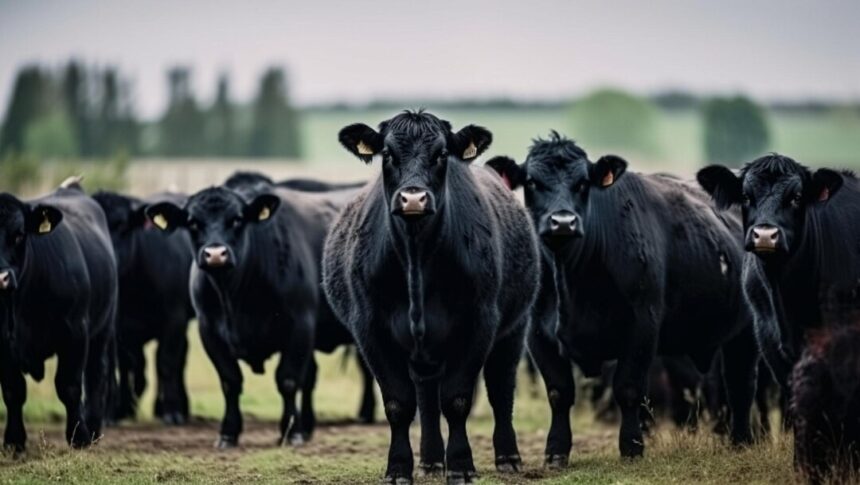The Drakensberger breed, originating from South Africa, is renowned for its adaptability, hardiness, and exceptional meat quality. With its distinctive black coloration and robust build, Drakensbergers are prized among cattle farmers for their suitability to various farming conditions. In this article, we’ll delve into ten crucial insights into breeding and farming Drakensberger cattle in South Africa, shedding light on their characteristics, management practices, and the benefits they offer to the agricultural industry.
- Historical Background:
The Drakensberger breed traces its roots back to the indigenous African cattle that roamed the foothills of the Drakensberg Mountains in South Africa. Over time, selective breeding efforts focused on enhancing desirable traits such as heat tolerance, foraging ability, and meat quality have shaped the modern Drakensberger breed into the robust cattle we see today. - Distinctive Characteristics:
Drakensberger cattle are characterized by their sleek black coat, which provides excellent heat absorption and UV protection, ideal for South Africa’s sunny climate. They possess a robust build, with strong legs and well-developed musculature, making them well-suited for extensive grazing and rugged terrain. - Adaptability to Environmental Conditions:
One of the key advantages of Drakensberger cattle is their remarkable adaptability to various environmental conditions. They thrive in both tropical and subtropical climates, exhibiting excellent heat tolerance and resistance to common livestock diseases prevalent in South Africa. - Meat Quality and Production:
Drakensberger cattle are renowned for their high-quality meat, prized for its exceptional tenderness, marbling, and flavor. The breed’s genetics contribute to the production of premium beef, meeting the demands of discerning consumers and the lucrative export market. - Breeding and Genetics:
Selective breeding programs aimed at improving Drakensberger genetics have been instrumental in enhancing desirable traits while preserving the breed’s natural hardiness and adaptability. Breeding strategies focus on optimizing meat quality, reproductive performance, and overall herd health. - Grazing Management:
Drakensberger cattle excel in extensive grazing systems, making them well-suited for extensive farming practices prevalent in South Africa. Rotational grazing and careful pasture management help optimize forage utilization and maintain optimal herd health and productivity. - Health and Disease Management:
Proactive health and disease management protocols are essential for ensuring the well-being of Drakensberger cattle. Regular vaccinations, deworming, and veterinary care help prevent common livestock diseases and maintain herd health and productivity. - Reproductive Efficiency:
Drakensberger cattle exhibit excellent reproductive efficiency, with cows typically calving unassisted and displaying good maternal instincts. Breeding programs focus on optimizing fertility rates, calving ease, and calf survival to ensure sustainable herd growth and productivity. - Market Demand and Economic Viability:
The high-quality meat produced by Drakensberger cattle commands premium prices in both domestic and international markets. As consumer demand for ethically produced, grass-fed beef continues to rise, Drakensberger farming presents lucrative opportunities for cattle producers seeking to capitalize on this growing market segment. - Sustainable Agriculture Practices:
Drakensberger farming aligns well with sustainable agriculture principles, promoting environmentally friendly practices such as rotational grazing, biodiversity conservation, and soil health management. By prioritizing animal welfare, land stewardship, and ecosystem health, Drakensberger farmers contribute to the long-term sustainability of the agricultural sector.
Breeding and farming Drakensberger cattle in South Africa offer a host of benefits, from their adaptability to various environmental conditions to their exceptional meat quality and economic viability. By leveraging the breed’s unique characteristics and implementing sound management practices, cattle producers can harness the full potential of Drakensberger farming, contributing to a thriving and sustainable agricultural industry in South Africa and beyond.
Join 'Farmers Mag' WhatsApp Channel
Get the latest Farming news and tips delivered straight to your WhatsApp
CLICK HERE TO JOIN






